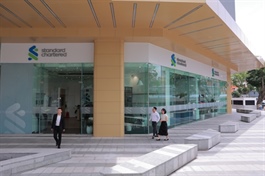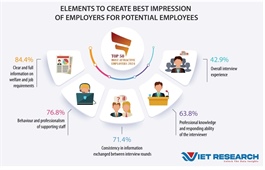Vietnam seizes opportunities amid global trade shifts
Vietnam seizes opportunities amid global trade shifts
Vietnam is navigating the shifting currents of global trade and seeking to sustain its economic growth. Barry Weisblatt, head of research at VNDirect Securities, spoke with VIR’s Khanh Linh about the strategic avenues the country must explore to capitalise on its potential.
How might policies introduced by the incoming US president impact Vietnam’s economic landscape?
Since the implementation of the 2017 tariffs, Vietnam’s exports to the US have been growing at an impressive annual rate of 25 per cent. Higher tariffs on competing markets present an opportunity for Vietnam to capture additional market share in sectors exporting to the United States.
This trend is particularly favourable for companies manufacturing business equipment or providing consulting services, as the proposed reduction in the US corporate tax rate from 21 to 15 per cent is likely to boost capital expenditure budgets, creating a lucrative channel for Vietnamese firms to expand their reach.
However, these tariffs carry inflationary pressures in the US, which could strengthen the dollar and pose challenges for Vietnam. A stronger dollar may exert downward pressure on VND, complicating efforts by the State Bank of Vietnam to maintain currency stability - arguably the most significant risk arising from this scenario.
In terms of benefiting industries, export manufacturing stands out, although much of this sector is dominated by foreign-led firms. Electronics and computer products, Vietnam’s largest export to the US, are primarily driven by such enterprises. Nonetheless, locally based sectors such as seafood and furniture production could also gain a competitive edge and expand market share under these conditions.

Barry Weisblatt, head of research at VNDirect Securities |
What do the credit ratings of FiinRating, S&P, and Moody’s reveal about Vietnam’s current economic stability and appeal to foreign investors?
Ten years ago, an article was written highlighting that Vietnam was just 11 notches away from achieving investment grade status, and outlined the necessary steps to reach this milestone. Fast-forward to today, and the country now stands only one notch away from this coveted designation. This brings the question: what steps should be taken to finally secure investment grade status?
Achieving investment grade ratings would bring significant advantages to Vietnam. One of the key areas where these improvements would have a major impact is infrastructure development, which remains a top priority for the government. Vietnam is in critical need of expanded infrastructure, including roads, railways, power plants, and airports. These essential projects require substantial debt financing, much of which must come from global capital markets.
By strengthening its banking system and upgrading its credit ratings to investment grade, Vietnam would be able to tap into debt at much lower costs. The spread between investment grade and non-investment grade debt is substantial, and accessing this cheaper financing would make many large-scale infrastructure projects more feasible.
With debt costs potentially reduced by as much as 200 basis points, the government would have greater access to capital for high-priority projects, accelerating their realisation.
As Vietnam aims for a robust economic growth target next year, what are the key domestic and international factors likely to influence the achievement of this goal?
Vietnam has set an ambitious GDP growth target of 7.5 per cent, with the potential to reach as high as 8 per cent next year. Achieving this goal requires careful attention to several key economic drivers. Among these, consumption is the largest contributor to GDP, and a recovery in consumer spending would provide a significant boost. However, retail sales growth has been moderate recently, which presents a challenge in reaching the desired level of consumption-driven growth.
While consumption plays a critical role, one area more directly within the government’s control is public investment. Currently, Vietnam’s implementation of public investment stands at only 73 per cent of the target for the year, which is relatively low. Increasing the implementation of public investment to 100 per cent of the target next year could contribute more than one percentage point to GDP growth - a significant impact.
This focus on public investment is especially important as the government is streamlining its processes to ensure greater efficiency. Efforts to remove cumbersome regulations, simplify approval, and facilitate land clearance are all essential to making public projects more feasible. These measures are designed to speed up the implementation of infrastructure projects, which are vital for long-term economic development.
By improving the speed and efficiency of public spending, the government can help unlock more economic potential and support GDP growth. Infrastructure development, which relies heavily on public investment, is not only key to short-term economic performance but also to the country’s long-term competitiveness and modernisation.
Which sectors are expected to pull in the most investment in the coming years?
In terms of attracting more investors, the infrastructure sector appears to be one of the most promising areas, particularly with the government’s increasing focus on public investment. A number of listed companies are already capitalising on this opportunity.
For example, Airports Corporation of Vietnam is actively involved in various development projects, including the construction of new airports, that are progressing on schedule. Similarly, HHV, which specialises in roadway construction, is also positioned to take advantage of the growing demand for improved infrastructure.
The public investment drive is expected to continue fuelling demand in these sectors, making them attractive for both domestic and international investors. With the government working to streamline approvals, ease land clearance processes, and remove regulatory barriers, infrastructure projects are becoming increasingly feasible.
These efforts will likely lead to faster disbursement of funds and the completion of key infrastructure projects, further benefiting companies that are directly involved.
























